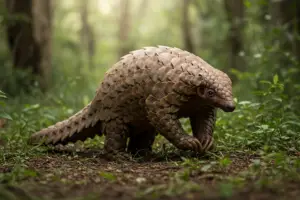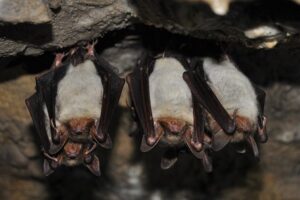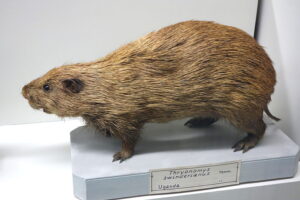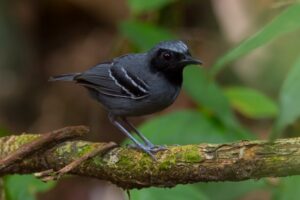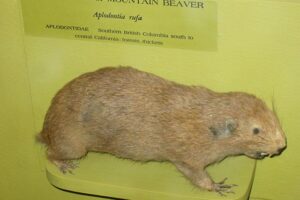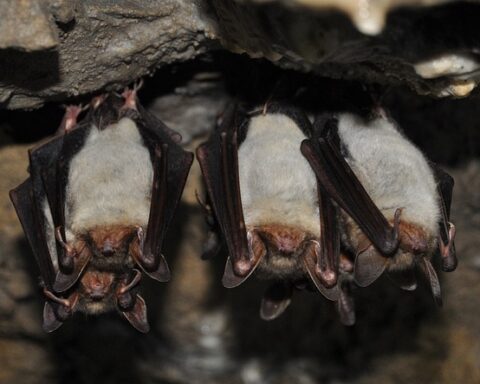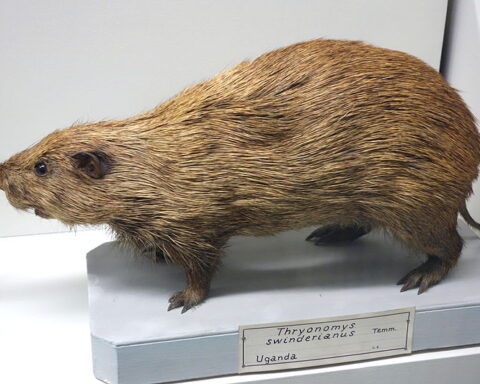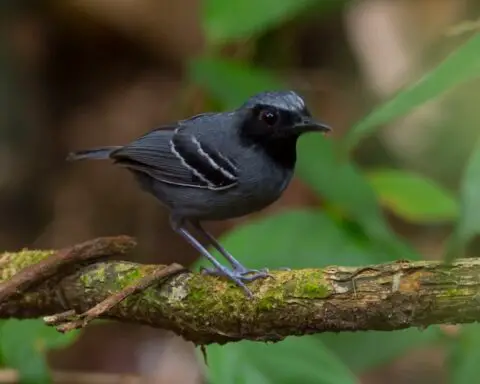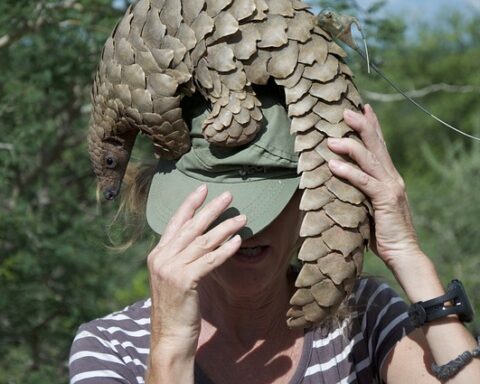The giant pangolin is an extraordinary mammal known for its distinctive armored appearance, covered in large, overlapping scales that provide exceptional defense. Native primarily to tropical rainforests and savannas in Africa, it specializes in a diet consisting mostly of ants and termites. Its powerful, curved claws are perfectly adapted for breaking into insect nests, while its impressively long, sticky tongue efficiently captures prey. A solitary, nocturnal animal, it navigates its habitat carefully, despite having limited eyesight and hearing. Remarkably adaptive, the giant pangolin is a master of survival, employing unique defensive strategies such as rolling into an impenetrable armored ball.
The Remarkable Diet and Family Life of Giant Pangolins:
Highly Specialized Diet:
Giant pangolins follow a strict diet, primarily consisting of ants and termites, occasionally supplemented by larger insects. Their specialized feeding strategy allows them to consume an astounding number—up to 200,000 ants in a single night—thanks to their uniquely adapted stomach, which holds up to half a gallon (2 liters).
Powerful Digging Skills:
Equipped with large, robust claws, giant pangolins can effortlessly rip apart termite mounds and subterranean nests, accessing abundant food sources hidden deep underground. Such adaptation highlights their evolved efficiency and success as specialized insectivores.
Essential Access to Water:
Regular access to fresh drinking water is critical for their survival, underscoring their dependence on proximity to water sources within their habitat.
Unique Reproductive Traits:
Female giant pangolins experience a gestation period of roughly five months, after which they typically give birth to a single offspring within a safe underground nest. The newborn weighs around 14–18 ounces (400–500 grams), highlighting a significant investment in individual offspring survival.
Early Life and Maternal Bonding:
At birth, a pangolin’s scales are soft and vulnerable, hardening within days. Although newborns can’t initially walk, they’re remarkably active, crawling on their stomachs. They quickly form a close bond with their mothers, accompanying them on nightly foraging trips by riding comfortably at the base of her tail, gaining essential survival skills firsthand.
Mystery Surrounding Lifespan and Maturity:
Despite extensive knowledge of their feeding and breeding habits, aspects of giant pangolin life remain elusive. Information about their exact age at weaning, sexual maturity, and overall lifespan is still unknown, adding to the mystery and fascination of these extraordinary mammals.
Together, these specialized behaviors and adaptations underline the giant pangolin’s exceptional role in the ecosystem, demonstrating the remarkable intricacies of nature’s designs.
Why Giant Pangolins Thrive in Their Unique Habitats:
Adaptability in Habitats:
Giant pangolins prefer the lush tropical rainforests, yet they adapt effectively to various forested areas and savannas. They generally stay close to water sources, essential for survival, but avoid higher altitudes.
Remarkable Burrow Builders:
These pangolins dig impressive underground homes—burrows extending up to 16 feet deep and 130 feet long. This sophisticated network provides safety and shelter during daylight hours, protecting them from predators and environmental threats.
Specialized Nocturnal Lifestyle:
Active predominantly between midnight and dawn, giant pangolins carefully and deliberately search for food under the cover of darkness, using their exceptional senses of smell and touch to locate insects.
Distinct Movement Patterns:
Their careful, deliberate movement involves curling their sharp front claws inward and walking on the outside of their wrists, thus protecting their claws from dulling. Additionally, they can stand and even walk short distances on hind limbs, using their muscular tails for balance.
Efficient Foraging Skills:
Utilizing powerful fore-claws, giant pangolins expertly dig around and into large termite and ant nests, both above ground and underground, accessing nutritious prey unavailable to many other species.
Unique Protective Strategies:
When threatened, giant pangolins instinctively roll into a tight armored ball, effectively shielding themselves from most predators. If cornered, they defend vigorously, using sharp scales on their tails as weapons, and deploying sprays of urine or anal gland secretions as deterrents.
Aquatic Defense Tactics:
Remarkably, giant pangolins also evade danger by plunging into nearby water bodies. They can swim underwater or walk along the bottom, holding their breath to remain hidden until threats pass.
Challenges of Poor Sensory Perception:
Despite robust physical defenses, their limited eyesight and hearing sometimes hinder accurate detection of predators. Still, their other survival adaptations usually compensate, enabling them to thrive despite these sensory limitations.
Giant pangolins showcase incredible survival instincts and unique behaviors, perfectly evolved to meet challenges posed by their habitats and predators alike.
Fascinating Reasons Why Giant Pangolins Stand Apart in Nature
Impressive Size and Strength:
Giant pangolins are the largest in the order Pholidota, reaching body lengths of 30–36 inches (75–90 cm), tail lengths between 18–30 inches (50–80 cm), and weighing an impressive 55–80 pounds (25–35 kg). Males are notably larger than females, enhancing their dominance and survival capabilities.
Built for Ground Dwelling:
Designed for life on solid ground, these pangolins possess broad, cushioned soles and powerful, blunt claws on their hind feet, ideal for steady movement. Their forefeet boast large, sharp digging claws, perfectly suited for breaking into termite mounds and ant hills.
Remarkable Protective Armor:
Giant pangolins are covered with large, tough, grayish-brown scales—an extraordinary adaptation for defense. Beneath these protective scales is whitish skin, sparsely covered with hair, further enhancing their survival in challenging environments.
Extraordinary Feeding Adaptation:
Their tongues are incredibly specialized, measuring 16–27 inches (40–70 cm)—the longest among the seven pangolin species. These tongues can extend 14–16 inches (36–40 cm) beyond the mouth, allowing efficient capture of ants and termites deep inside nests.
Advanced Salivary Glands:
Equipped with salivary glands as large as goose eggs, giant pangolins produce sticky saliva, expertly trapping prey on their elongated tongues, ensuring maximum feeding efficiency.
Unique Anatomical Features:
With no external ears, pangolins maintain streamlined profiles suited for their burrowing lifestyle. Their tails are armored with scales, although notably, the underside remains scale-free. An exceptionally long breastbone provides structural support, essential for their specialized digging habits.
Together, these remarkable features highlight why giant pangolins are among nature’s most uniquely adapted and intriguing creatures.

